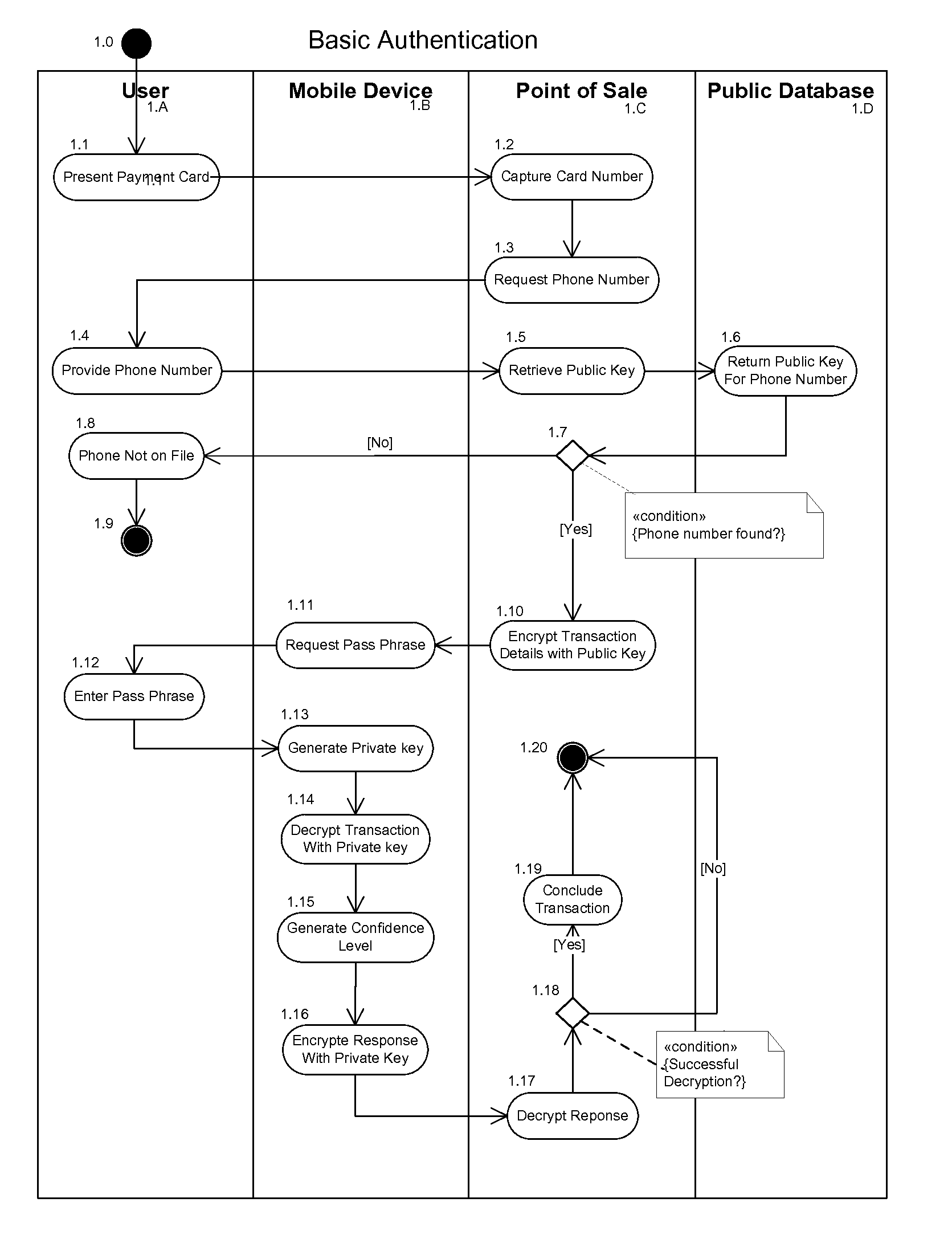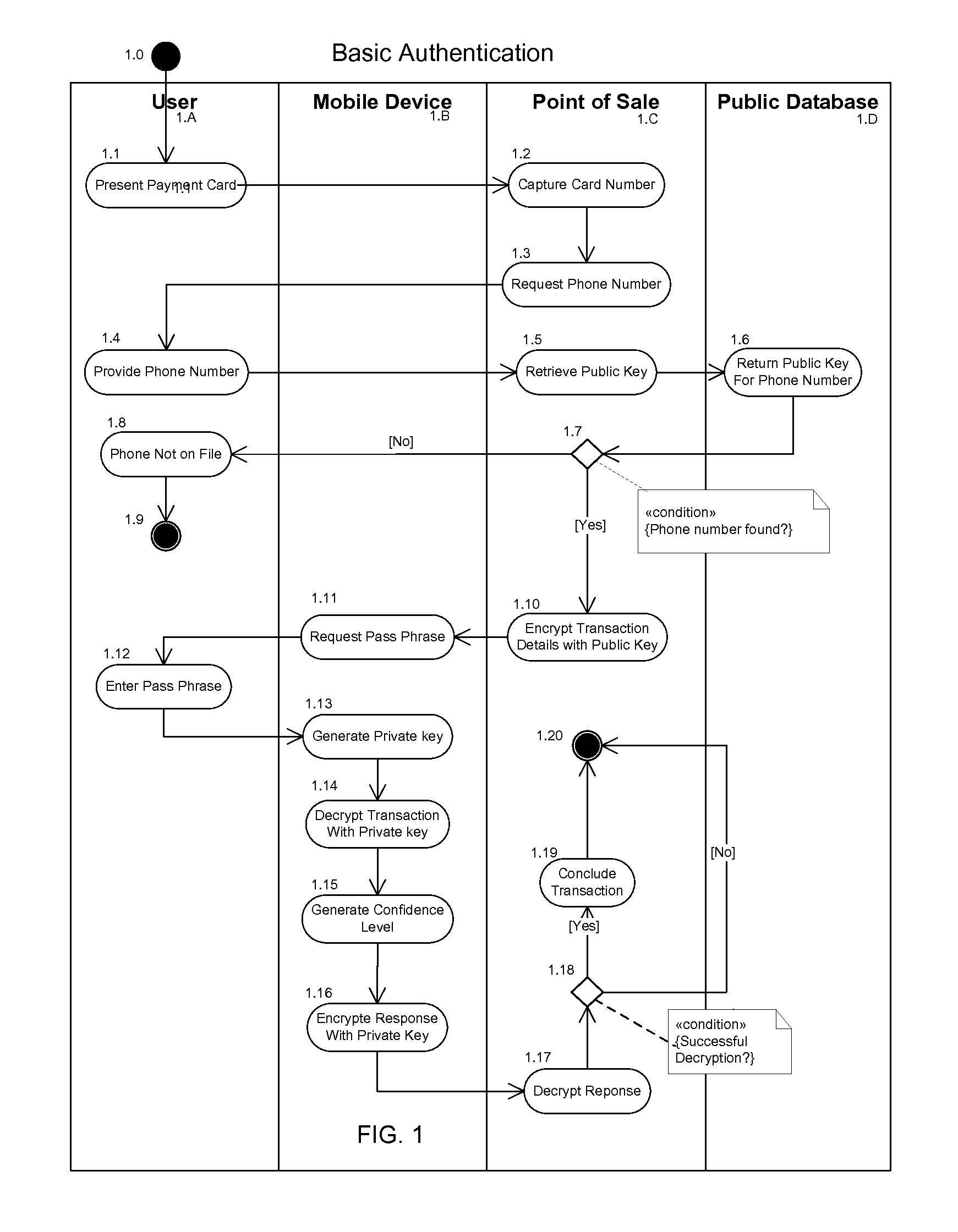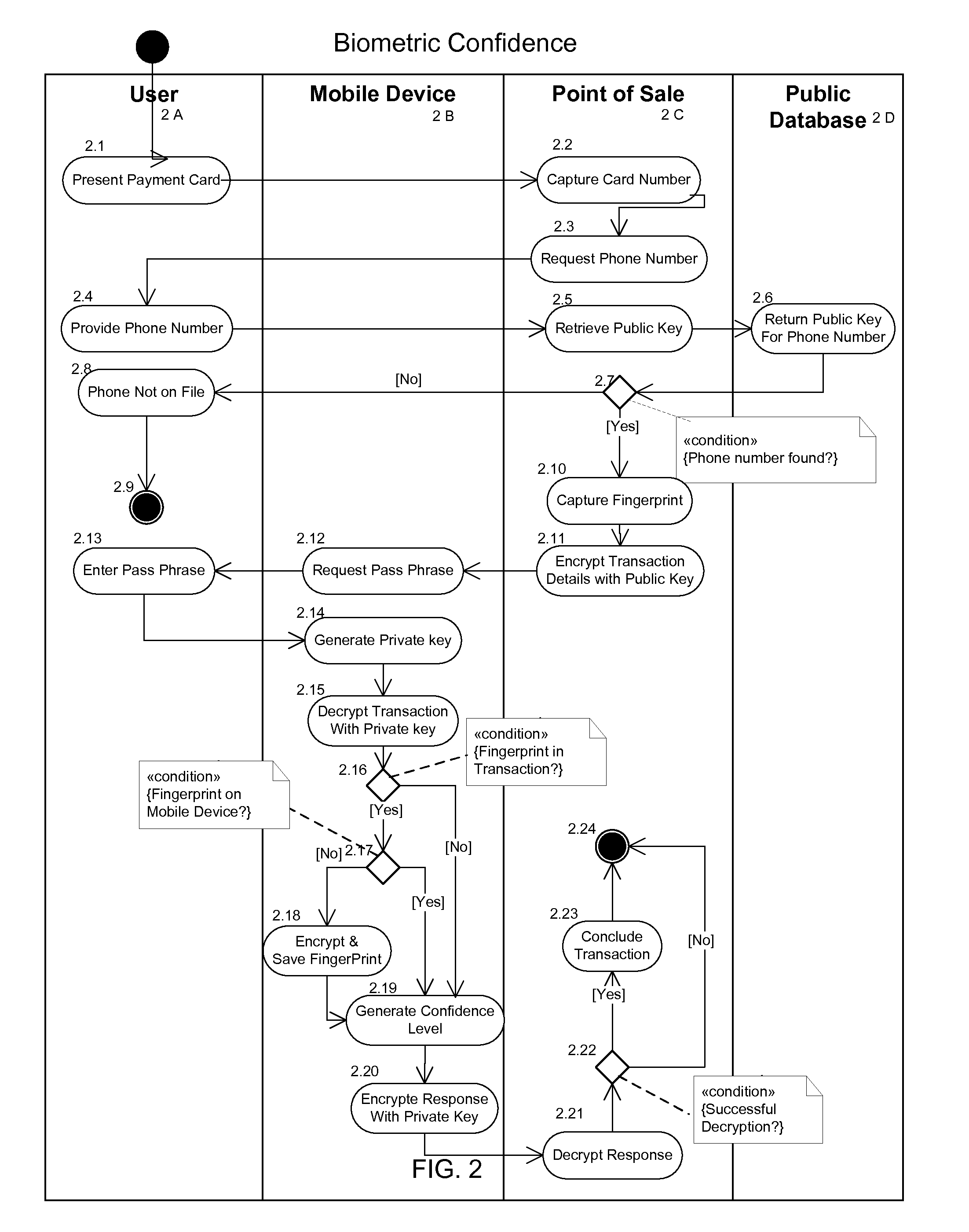Multi-Factor Authentication Using a Mobile Phone
a multi-factor authentication and mobile phone technology, applied in the direction of payment protocols, instruments, eavesdropping prevention circuits, etc., can solve the problems of economic loss of goods and services to businesses and consumers, card and identity theft is frequently carried out, and fraudulent duplication of stolen card credentials is relatively easy
- Summary
- Abstract
- Description
- Claims
- Application Information
AI Technical Summary
Benefits of technology
Problems solved by technology
Method used
Image
Examples
first embodiment
FIG. 1—First Embodiment
[0088]One embodiment of multi-factor authentication is illustrated in FIG. 1. In this first embodiment the User (1A) presents a payment card 1.1, such as a credit card or a debit card that is inscribed with a human readable number or several numbers, at a Point of Sale (1C). The Point of Sale can be a payment station in some store, or at petrol or gasoline station, or an automated vending machine, or any other attended or unattended payment or transaction station.
[0089]The Point of Sale captures the card number or numbers 1.2 from the card presented by the User (1A). The Point of Sale then requests the phone number 1.3 from the User who presented the payment card.
[0090]The User provides the phone number 1.4 to the Point of Sale for the Mobile Device (1B) that the User has in their possession.
[0091]The Point of Sale uses this phone number provided by the User to retrieve the public key 1.5 associated with the phone number provided by the User from a Public Data...
second embodiment
FIG. 2—Second Embodiment
[0114]A second embodiment of multi-factor authentication is illustrated in FIG. 2. In this embodiment we cover the capture of the biometric data from the User 2A and the generation of a confidence level of authentication for the User by including the use of biometric data associated with the User
[0115]In this second embodiment the User presents a payment card 2.1, such as a credit card or a debit card that is inscribed with a human readable number or several numbers, at a Point of Sale (2C). The Point of Sale can be a payment station in some store, or at petrol or gasoline station, or an automated vending machine, or any other attended or unattended payment or transaction station.
[0116]The Point of Sale captures the card number or numbers 2.2 from the card presented by the User. The Point of Sale then requests the phone number 2.3 from the User who presented the payment card.
[0117]The User provides the phone number 2.4 to the Point of Sale for the Mobile Devi...
PUM
 Login to View More
Login to View More Abstract
Description
Claims
Application Information
 Login to View More
Login to View More - R&D
- Intellectual Property
- Life Sciences
- Materials
- Tech Scout
- Unparalleled Data Quality
- Higher Quality Content
- 60% Fewer Hallucinations
Browse by: Latest US Patents, China's latest patents, Technical Efficacy Thesaurus, Application Domain, Technology Topic, Popular Technical Reports.
© 2025 PatSnap. All rights reserved.Legal|Privacy policy|Modern Slavery Act Transparency Statement|Sitemap|About US| Contact US: help@patsnap.com



